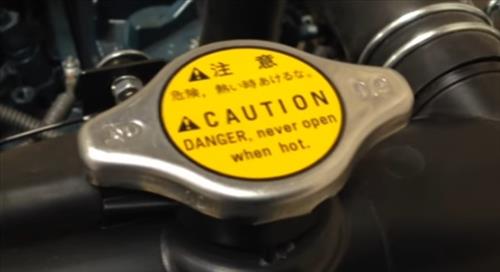
What Happens if You Overfill Coolant?
If the coolant is overfilled, it will likely be blown out of the system through the radiator cap or reservoir but usually does not damage any components.
Occasionally the radiator fluid can be blown into the electrical system, which may cause a problem, but this is rare.
Usually, there is no issue unless the fluid happens to get into the electronics, which usually does not happen.
When coolant blows out from the radiator, it is best to get it checked out by a professional to be sure everything is working correctly.
An engine that overheats can also blow out coolant which can be a serious issue.
How the Coolant System Work in Modern Vehicles
The coolant system in modern vehicles differs slightly from older cars as they use a reservoir tank many older cars and trucks did not have.
Older cars and trucks often had an overfill tank that would capture fluid that came out of the radiator when hot but was not truly a part of the system.
For this reason, older cars and trucks often had coolant topped off at the radiator, which is no longer the case.
Modern cars no use a reservoir that is topped off and manages the level of the radiator.
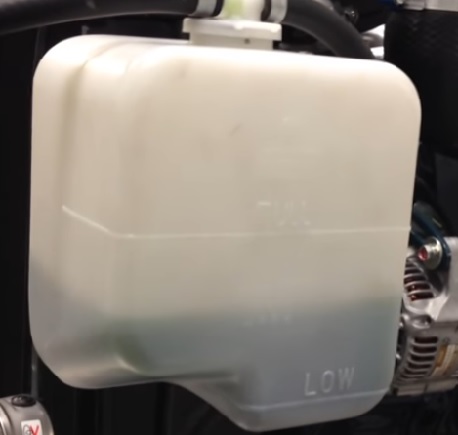
When coolant becomes hot expands, and when it coils down, it will contract.
The expansion and contraction is the reason to never open the radiator cap when the engine is hot since the coolant will be under pressure.
If the system is overfilled, the expansion of the coolant will cause the fluid to build up pressure, and fluid may cone out.
A radiator cap has a set pressure to hold coolant before it opens and lets the fluid blow out.
The set pressure of the radiator cap is a safety feature, so the coolant never has too much of a build-up of pressure.
Radiator fluid has a distinct smell often described as sweet which can often be smelled inside the vehicle.
How To Check the Coolant Fluid Level
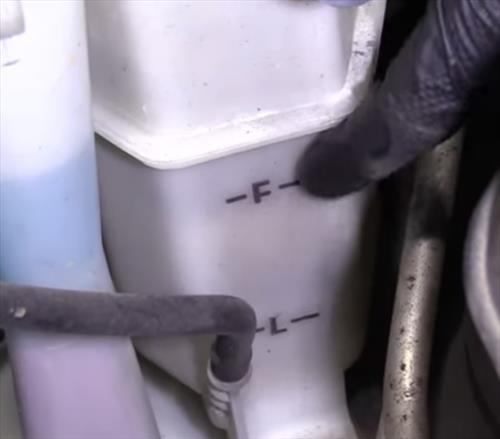
To check the coolant level, locate the reservoir tank and look at the side of the tank for full or low markers.
The fluid should be between the two markers.
If the coolant is over the full marker, some fluid can be removed until it is at the correct level.
If there is no fluid or it is below the Low marker, some should be added.
How To Properly Fill Coolant
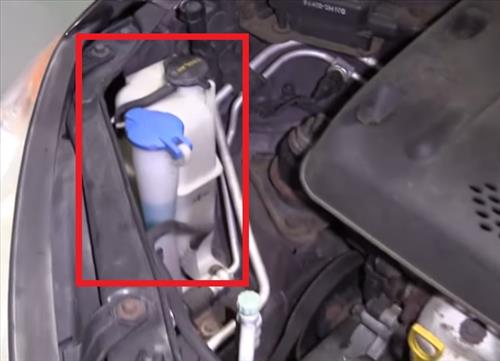
The coolant used in modern vehicles is usually a 50/50 mixture of antifreeze and distilled water.
If water only is added to a system, be sure to use distilled water as tap water has chemicals that can corrode the coolant system.
Only a small amount of water should be added to a coolant system. If it is very low, a 50/50 mixture of antifreeze should be used.
How to Add Coolant
- Locate the reservoir tank and the high and low markers.
- Using a 50/50 mixture of antifreeze, add it in until the fluid level is between High an Low markers.
How To Remove Excess Coolant
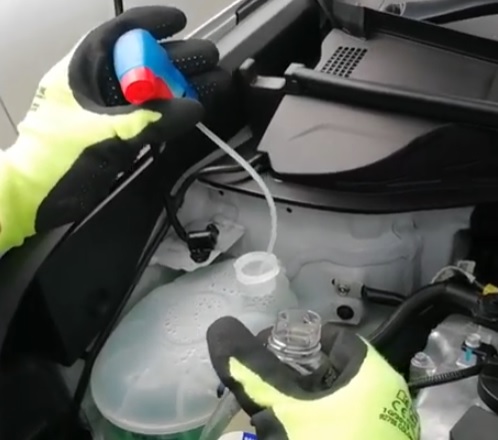
If the coolant is accidentally overfilled, it can be removed from the reservoir tank until the level is correct.
A common quick way to remove the fluid is to use an old spray bottle where the top can screw off.
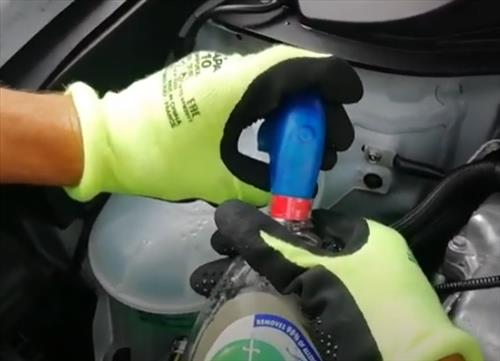
An old windshield cleaner bottle works well for this, but there are also other bottles that can also work well.
Alternatively, the bottom hose can be removed from the reservoir tank and fluid drained out.
Summary
If you accidentally overfill the coolant system in a vehicle, it may blow out when the engine comes hot.
There is usually no harm to this but more of a mess with antifreeze leaking out and a coolant smell.
While usually there is no harm, occasionally the antifreeze can blow into the electrical system and cause problems, although this is rare.
If you think the car or truck has too much coolant, it can be drained down to the correct levels.
An old spray bottle placed inside the reservoir is often used to remove excess fluid.
Have you had issues with overfilled coolant levels? Let us know your thoughts below.
I had no clue and was filling it to the top because I have a leak and felt I had to fill it less by filling it to the top,,, but always had smoke bursting from front…. Who knew… yes I emptied it and alls better.